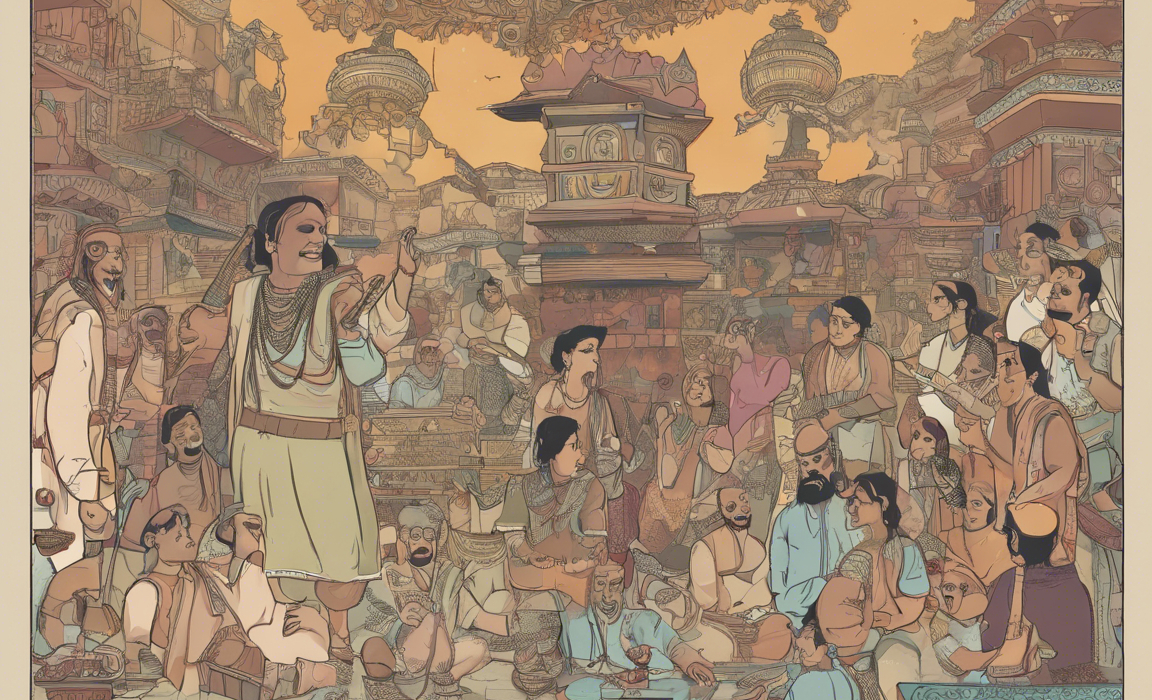Translation is a powerful tool that transcends boundaries and brings cultures closer together. As one of the most widely spoken languages in the world, Hindi plays a significant role in connecting people across different nations. In this blog post, we will delve into the intricacies of Hindi translation, exploring its beauty, challenges, and significance in today’s globalized world.
The Significance of Hindi Translation
Importance of Hindi as a Global Language
Hindi is not only the official language of India but also holds the status of being one of the most spoken languages globally. With over 500 million speakers worldwide, Hindi serves as a crucial medium for communication, trade, and cultural exchange. Its prominence in various sectors such as entertainment, literature, and business makes Hindi translation an essential component for reaching a broader audience.
Bridging Gaps in Communication
Translation, especially in languages as diverse as Hindi, acts as a bridge between people with different linguistic backgrounds. It allows for the exchange of ideas, information, and emotions, fostering understanding and unity among individuals. Hindi translation facilitates cross-cultural interactions, enabling smoother communication in a multilingual society.
The Beauty of Hindi Translation
Expressing Emotions and Nuances
Hindi, known for its rich literary heritage and poetic expressions, presents a unique challenge for translators in capturing its nuances and emotions. The beauty of Hindi translation lies in preserving the essence of the original text while adapting it to resonate with the target audience. Translators often navigate through cultural references, idioms, and wordplay to convey the true meaning of the content accurately.
Preserving Cultural Identity
Translation is not merely converting words from one language to another but also preserving the cultural identity embedded within the text. Hindi translation involves more than just linguistic accuracy; it requires an understanding of the cultural nuances, historical context, and social conventions specific to the Hindi-speaking community. By maintaining the cultural authenticity in translations, the beauty of Hindi literature and artistry shines through.
Fostering Multilingualism
In a world where diversity is celebrated, multilingualism plays a crucial role in promoting inclusivity and respect for different languages. Hindi translation contributes to this narrative by making content accessible to a wider audience, regardless of their linguistic background. Embracing multilingualism through translation enhances cross-cultural appreciation and paves the way for global solidarity.
Challenges in Hindi Translation
Linguistic Variations and Dialects
One of the primary challenges faced by translators in Hindi translation is the vast array of dialects and regional variations within the language. From colloquial expressions to regional idioms, navigating through these linguistic nuances requires a deep understanding of the diverse linguistic landscape of Hindi-speaking regions. Translators must carefully choose words and phrases that resonate with the target audience while maintaining the essence of the original text.
Contextual Adaptation
Translating content from one language to another involves more than just linguistic accuracy; it also requires contextual adaptation to suit the cultural sensibilities of the target audience. Hindi translation often involves adapting metaphors, cultural references, and historical contexts to ensure that the content remains relevant and meaningful to the readers. Striking a balance between cultural authenticity and linguistic clarity is a challenge that translators face in every translation project.
Technical and Domain-Specific Content
Translating technical or domain-specific content into Hindi poses its own set of challenges due to the specialized vocabulary and terminologies involved. Whether it is scientific literature, legal documents, or medical reports, Hindi translation requires translators with a deep understanding of the subject matter and expertise in the relevant field. Ensuring accuracy and precision in translating technical content is vital to convey the intended message effectively.
FAQs (Frequently Asked Questions)
1. What is the importance of Hindi translation in the digital age?
In the digital age, Hindi translation plays a crucial role in making online content accessible to a broader audience. It facilitates cross-border communication, enhances user experience, and expands market reach for businesses operating in Hindi-speaking regions.
2. How can I ensure quality in Hindi translation services?
To ensure quality in Hindi translation services, opt for professional translators with expertise in the Hindi language and relevant industry experience. Collaborating with translation agencies that offer proofreading, editing, and quality assurance processes can also help maintain high translation standards.
3. What are the common challenges faced by translators in Hindi localization?
Translators often face challenges such as linguistic variations, cultural nuances, and technical complexities in Hindi localization projects. Adapting content to suit regional preferences, maintaining consistency in terminology, and ensuring accurate translations are some of the key challenges faced by translators.
4. How does Hindi translation contribute to cultural preservation?
Hindi translation plays a vital role in preserving and promoting Indian culture, literature, and heritage on a global platform. By translating works of art, literature, and historical texts into Hindi, translators contribute to the preservation of cultural identity and heritage for future generations.
5. What are the emerging trends in Hindi translation technology?
With advancements in artificial intelligence and machine translation, there is a rising trend in using technology for Hindi translation services. AI-driven translation tools, neural machine translation, and localization platforms are revolutionizing the translation industry, enhancing efficiency, speed, and accuracy in Hindi translations.
In conclusion, Hindi translation is not just a linguistic service but a cultural endeavor that brings people together through the beauty of language. By overcoming challenges, preserving cultural identities, and fostering multilingualism, Hindi translators play a crucial role in shaping a more connected and inclusive global community. Embracing the beauty of Hindi translation is not just about words; it’s about bridging hearts and minds across borders.





